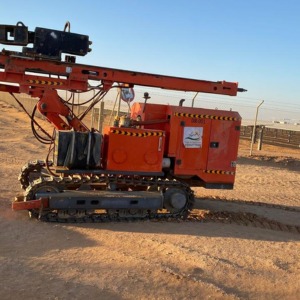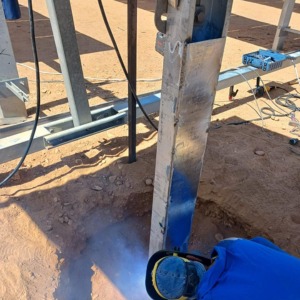

Civil Works
Civil Work Process Description
Civil works form the backbone of any infrastructure project, providing stable foundations, access routes, drainage systems, and supporting structures for mechanical and electrical components. The process involves careful planning, precise execution, and strict quality control to meet engineering, safety, and environmental standards.
- Site Preparation
- Survey and Setting Out: Conduct topographical surveys and mark reference points, boundaries, and benchmarks based on approved drawings.
- Clearing and Grubbing: Remove vegetation, topsoil, debris, and obstructions.
- Leveling and Grading: Grade the site to the required levels and slopes, ensuring proper drainage and accessibility.
- Access Road Preparation: Construct temporary or permanent soil or gravel roads to facilitate construction traffic (refer to the Soil Road Construction Process).
- Excavation and Earthworks
- Excavation: Perform trenching, pit excavation, or bulk excavation for foundations, ducts, manholes, and other structures.
- Backfilling and Compaction:
- Backfill using selected material in layers (150–200 mm loose thickness).
- Compact each layer using appropriate compaction equipment (plate compactor, roller) to the specified density (typically 95–98% Modified Proctor).
- Earth Embankments: Form embankments for roads, platforms, or flood protection as per design.
- Foundation Works
- Formwork Installation: Erect shuttering using steel or timber forms to the exact shape and dimensions required.
- Reinforcement Installation: Cut, bend, and fix steel rebar in place as per structural drawings and bar bending schedules.
- Concrete Placement:
- Pour concrete using mixers, pumps, or manual placement.
- Use vibrators to compact concrete and remove air voids.
- Cure concrete for the specified period (typically 7–14 days using water, curing compound, or wet burlap).
- Anchor Bolts & Inserts: Place embedded items and verify alignment before concrete sets.
- Drainage and Utility Ducting
- Trenching for Cables and Pipes: Excavate trenches to specified width and depth, maintaining slope and alignment.
- Laying Ducts and Pipes:
- Install PVC/HDPE conduits or concrete pipes on bedding layers.
- Backfill and compact in layers, protecting utilities from mechanical damage.
- Culverts and Drainage Channels: Construct reinforced concrete or pre-cast culverts, headwalls, and open channels to manage stormwater flow.
- Structural Works (As Required)
- Inverter Pads, Control Buildings, and Foundations:
- Construct plinths, slabs, columns, and walls per structural design.
- Waterproofing and surface finishing as required.
- Perimeter Walls or Fencing Foundations: Install base structures for boundary walls, gates, and security fencing.
- Finishing and Surface Works
- Blinding and Surface Treatment: Apply lean concrete or gravel layer as a base for foundations or floors.
- Concrete Finishing: Trowel, broom, or float finish slabs and surfaces as specified.
- Gravel Surfacing: Spread and compact gravel on roads, pads, or cable trenches where specified.
- Quality Control and Inspection
- Field Tests:
- Soil compaction (sand cone, nuclear density gauge).
- Concrete slump, temperature, and cylinder compression tests.
- Rebar inspection and formwork checks before pouring.
- Dimensional Checks: Ensure all structures conform to approved plans and tolerances.
- Safety and Environmental Considerations
- Use PPE: helmets, boots, gloves, reflective vests.
- Install barricades and signage around excavation and heavy equipment zones.
- Implement dust and erosion control measures (e.g., water spraying, silt traps).
- Follow all local environmental and safety regulations.

